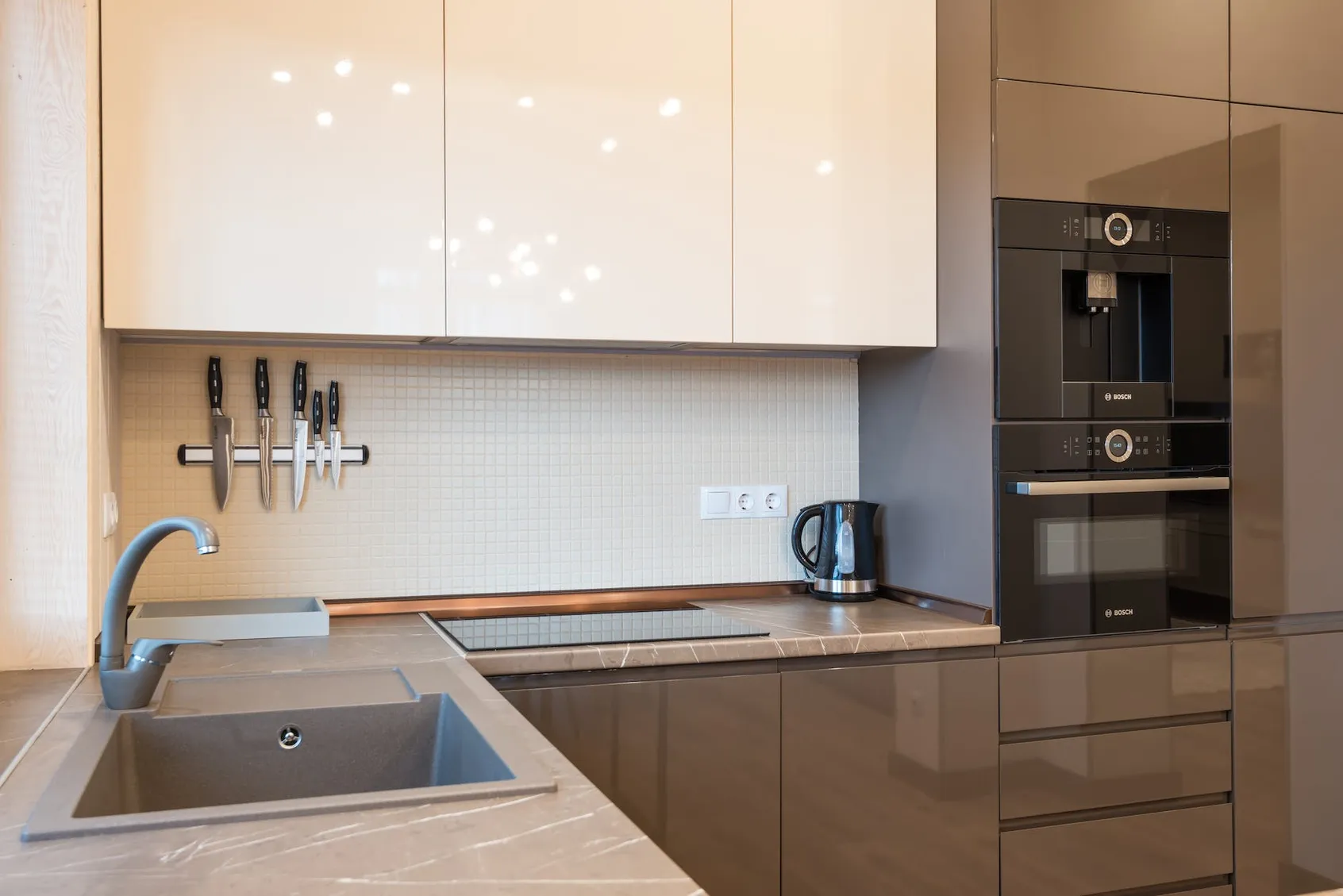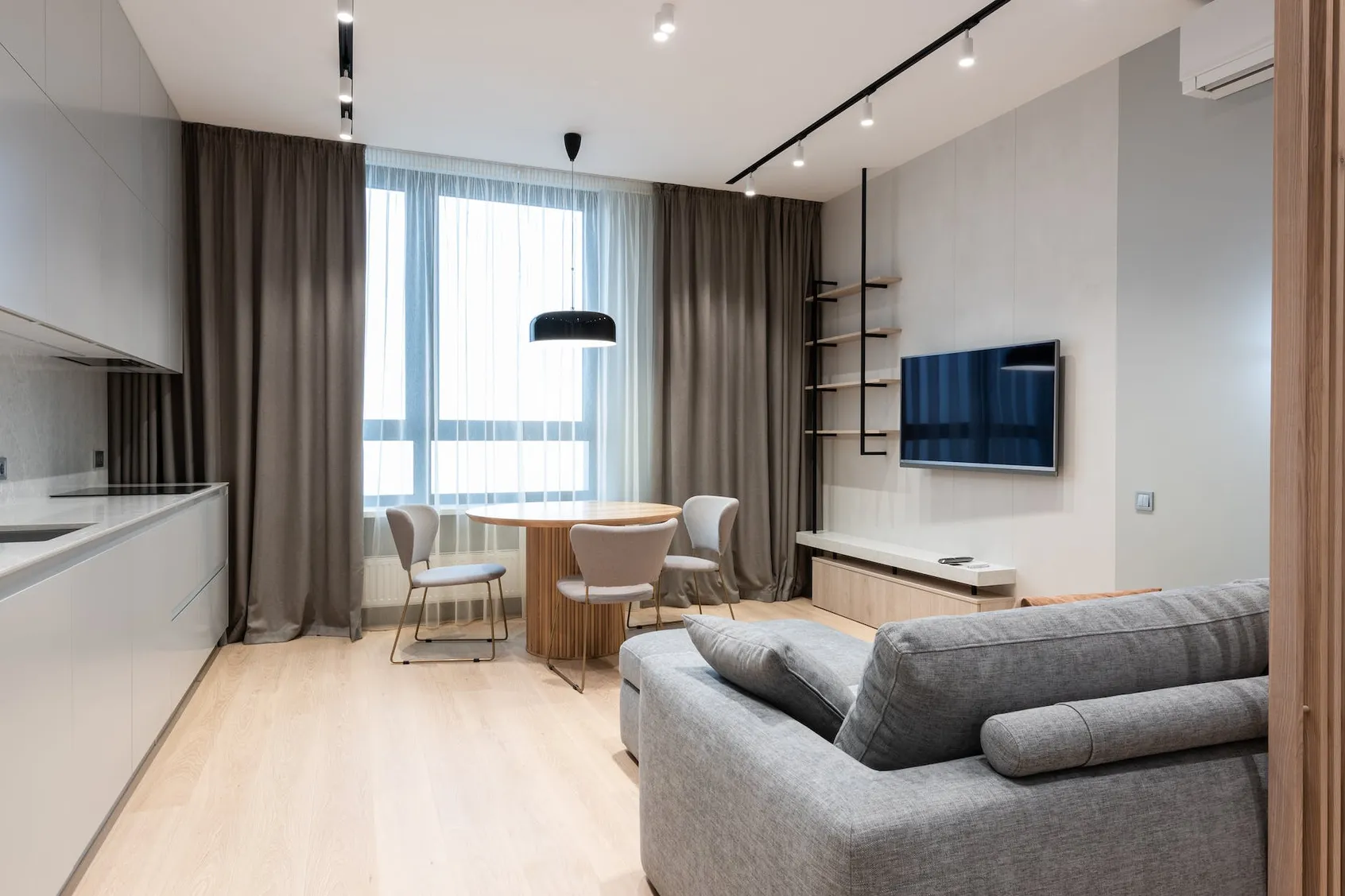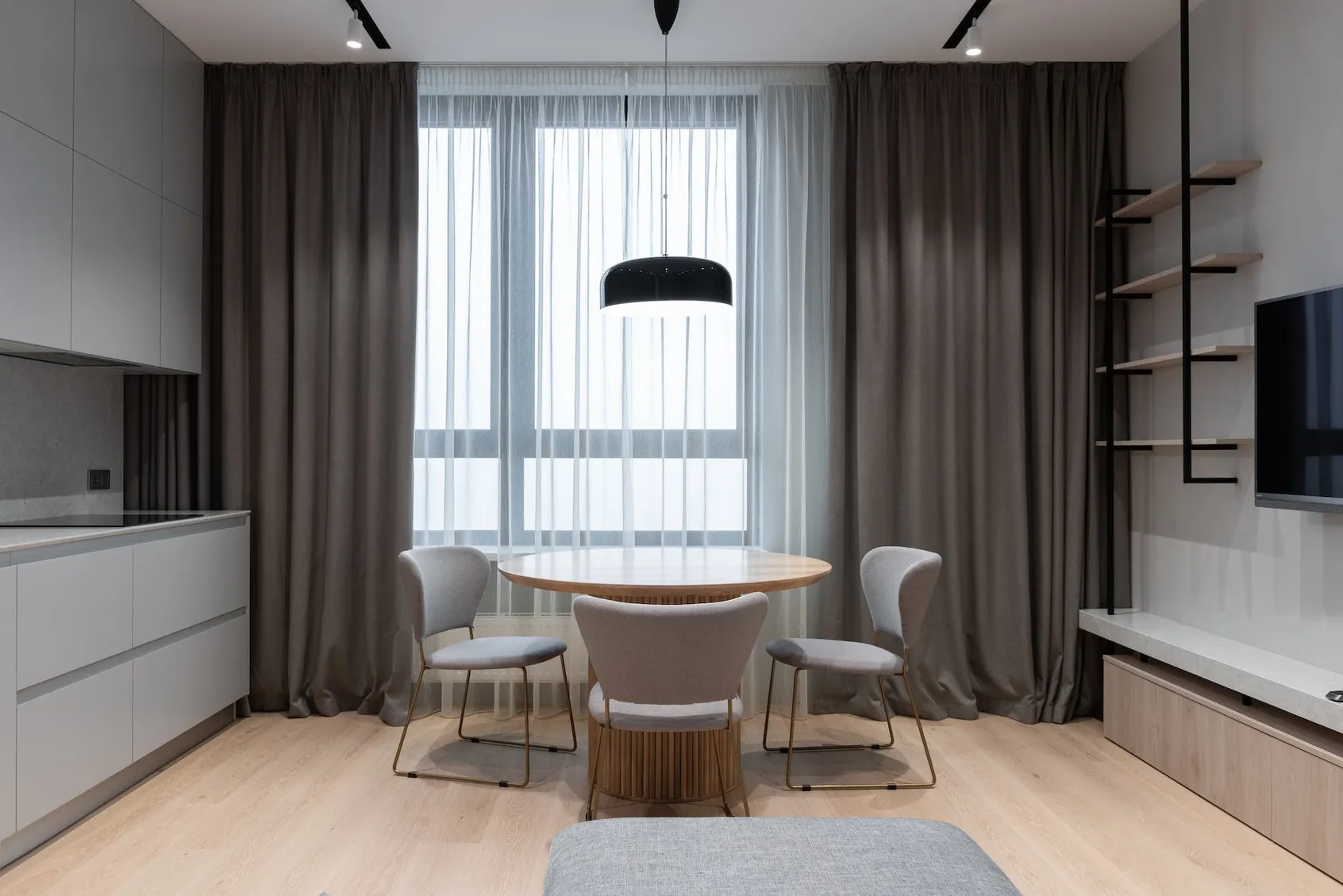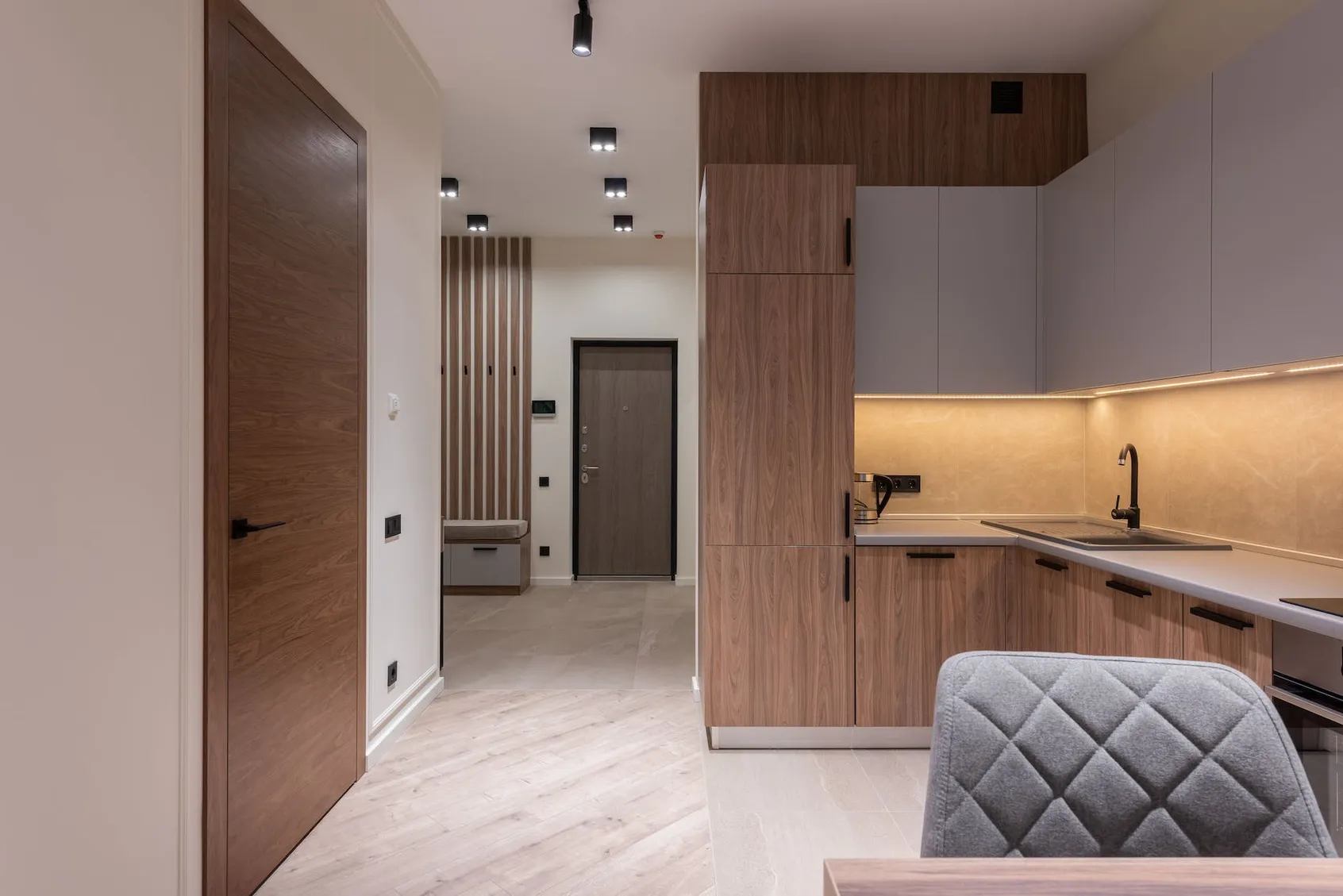Installing a sink in your kitchen can be a great way to update the look of your home and make it more convenient for day-to-day tasks. The type of wood you install under the sink can make a big difference in the overall look and feel of the space, so it’s important to choose wisely.
Various wood types are available, each with unique properties, so it’s important to understand their differences to make an informed decision. In this article, we’ll discuss the best wood for under the kitchen sink you should install.
Best Wood For Under Kitchen Sink
When installing wood under your kitchen sink, the best type of wood depends on your specific needs. The most important factors to consider are the wood’s durability, moisture resistance, and overall aesthetic.
Hardwoods such as mahogany, walnut, and oak are great options for under your kitchen sink. These woods are incredibly durable and will last for years while providing an attractive look in your kitchen.
In addition to these hardwoods, softwoods such as pine or cedar are also great for installing under your kitchen sink. These woods are less durable than hardwoods but are more affordable, providing great moisture resistance. Softwoods are also easy to work with, making them great for DIY projects.
When installing wood under your kitchen sink, it must be properly sealed and treated against moisture and bacteria. This will ensure that the wood remains beautiful and functional for years. Additionally, if you use hardwoods, consider adding a protective finish to the wood, such as a polyurethane or lacquer. This will help to protect the wood against scratches, stains, and water damage.
You should also choose the right type of wood for your specific needs. Hardwoods such as mahogany, walnut, and oak are great options for under your kitchen sink, while softwoods such as pine and cedar are more affordable and easier to work with. Regardless of the type of wood you choose, properly seal, and treat the wood against moisture and bacteria for optimal protection and longevity.

Types Of Wood
When it comes to installing wood under your kitchen sink, a few types of wood are suitable for this job. Each type has advantages and disadvantages, and it’s important to understand these before selecting the right wood for your installation.
- Plywood: It is strong and durable and easy to cut and shape to fit the exact dimensions of your sink. It’s also relatively inexpensive and can be stained or painted to match the color scheme of your kitchen. The downside of plywood is that it’s not as waterproof as other types of wood, so it may require additional sealing or waterproofing measures.
- MDF (medium-density fiberboard): It is a very strong and durable material that is less expensive than plywood. It’s also easy to cut and shape and is available in various colors and finishes. The downside of MDF is that it can be prone to warping over time, so it’s important to ensure it’s properly sealed and waterproofed.
- Solid wood: It is a more expensive option but also very strong and durable. It’s available in various colors and finishes and can be stained or painted to match your kitchen’s color scheme. The downside of solid wood is that it can be prone to warping, cracking, and mold growth, so it’s important to ensure it’s sealed and waterproofed.
- Particle Board: It’s not as strong or durable as solid wood, but it’s easy to cut and shape and is available in various colors and finishes. The downside of particle board is that it’s not as waterproof as other types of wood, so it may require additional sealing or waterproofing measures.
Benefits Of Different Woods
When it comes to installing wood under your kitchen sink, many options can provide you with a range of benefits. Different wood types can offer different advantages, so choosing the best one for your needs is important.
Softwoods such as pine and cedar are often used in kitchen projects because they are lightweight and easy to work with. However, they are more vulnerable to moisture and may need to be sealed or stained more frequently.
Hardwoods such as oak, maple, and walnut are more durable and can provide a longer lifespan. They take longer to install, but the extra effort is worth it. Hardwoods are also more water-resistant, making them popular for kitchen projects. They are also more expensive than softwoods but last much longer.
Bamboo is a great choice if you’re looking for a more sustainable option. Bamboo is an eco-friendly material that is both strong and lightweight. It is also highly resistant to moisture and is easy to install. The downside is that bamboo is more expensive than traditional wood, so it may not be the best option for everyone.
Tips For Installing Wood Under The Sink
When installing wood under the sink, it’s important to remember that this area is prone to exposure to water and moisture. Here are some tips to ensure a successful installation:
- Choose the right type of wood, such as cedar or redwood, which is naturally resistant to moisture and decay. Avoid woods like pine or oak, which are more susceptible to water damage.
- Apply a waterproof sealant to the wood before installing it under the sink. This will help protect it from any moisture that may come into contact with it.
- Use stainless steel screws or nails to secure the wood in place, as they are less likely to rust or corrode in wet conditions.
- Allow proper ventilation under the sink by leaving a gap between the wood and the wall or cabinets. This will help prevent any moisture from getting trapped and causing damage to the wood.
- Lastly, regularly inspect the wood under the sink for any signs of damage or water buildup. If any issues are detected, address them immediately to avoid further damage.
Wood Finishes For Under The Sink
There are a few important factors to consider regarding wood finishes for under the sink. First and foremost, you’ll want a water-resistant finish that can withstand frequent exposure to moisture.
Some good options to consider include polyurethane, epoxy, and marine varnish. These finishes are designed to protect against water damage and are often used on boats and other marine applications.
Another important consideration is the type of wood you’re working with. Some woods are naturally resistant to moisture and decay, while others are much more susceptible to damage.
You may not need to apply any additional finish if you work with naturally water-resistant wood like teak or cedar. However, if you’re working with a less resilient wood like pine or oak, you’ll want to choose a finish that provides maximum protection.
Ultimately, the best wood finish under the sink depends on your specific needs and preferences. Research and test different finishes on a small area before applying them to the entire surface. And as always, be sure to follow the manufacturer’s instructions carefully for best results.

Tools And Supplies Needed For Installation
When installing a new sink in your kitchen, you need to make sure that you choose the best wood type for the job. While some wood types may look great and be more affordable, there may be better options for installation under your kitchen sink. To ensure that you are selecting the best wood type for your installation, you will need to consider the following tools and supplies.
First, you must have basic tools, such as a saw, drill, screwdriver, and hammer. These tools will be essential for making the necessary cuts and holes in the wood and attaching it to the sink. Additionally, you must have a measuring tape and level to ensure everything is properly aligned and level before you begin.
When it comes to the wood itself, you must consider the type of wood best suited for the job. Hardwood is the best option for moisture-prone areas, such as under the sink. This type of wood is durable and resistant to water damage, so you can be sure it will last many years.
Finally, you must ensure you have the proper fasteners and sealants to properly secure the wood to the sink. The most common fasteners are screws, but you can use nails or other fasteners to secure the wood. For a better seal, you should also use a waterproof sealant to ensure the wood is properly sealed and protected from water damage.
Cost Considerations For Installing Wood Under The Sink
When installing wood under the kitchen sink, the cost is an important factor to consider. Solid hardwood is typically the most expensive option, ranging from $ 6 to $13 per square foot on average.
Softwoods like pine and cedar are much less expensive and can be found for under $3 per square foot. Softwoods are less durable than hardwoods and may need to be replaced more often, but they are a good choice if cost is a major concern.
When considering the cost of installing wood under the kitchen sink, weighing the pros and cons of each type of wood is important. Hardwoods are more expensive but provide the most durability and water resistance. Softwoods are less expensive but may need to be replaced more often. And engineered wood is a great compromise between the two, offering a more modern, water-resistant look.
Preparing The Area For Installation
Before deciding on the best wood types for installing under the kitchen sink, it is important to take the necessary steps to properly prepare the area for installation. This includes cleaning the area of any dirt, debris, or other contaminants that could damage the wood.
Additionally, it is important to measure the area to ensure that the wood is cut to the correct size for the project. Sealing the area with a primer or waterproof sealant is also a good idea to ensure that the wood is protected from moisture and other elements. Once the area is adequately prepared, it is time to select the best wood types for the job.
Troubleshooting Common Installation Issues
Installing wood under the sink can be a great solution for adding a rustic touch to your bathroom. However, there are some common installation issues you may encounter. Here are a few troubleshooting tips to help you out:
- Ensure that the wood is properly sealed to prevent moisture damage. Use a high-quality waterproofing sealant to protect the wood from water damage.
- Make sure the wood is level before installation. Use a level to ensure that the wood is even and won’t cause any issues with the sink or plumbing.
- Use appropriate materials for support. When installing wood under the sink, it’s important to use sturdy materials to support the sink’s weight and other items stored in the cabinet.
- Check for leaks. After installation, check for any leaks around the sink or plumbing. Tighten any loose connections or fix leaks to prevent water damage to the wood.

Pros And Cons Of Installing Wood Under The Sink
There are pros and cons to installing wood under the sink, depending on the type of wood and how it’s sealed.
Pros
- Durability: Certain types of wood, such as teak or cedar, are naturally resistant to water and can withstand moisture and humidity in a bathroom or kitchen.
- Aesthetic appeal: Wood adds a warm, natural look to a room and can be a beautiful design element.
- Cost-effective: Wood is often less expensive than other materials, such as tile or granite.
Cons
- Water damage: If the wood is not properly sealed and protected, it can be susceptible to water damage, leading to rot, mold, and other issues.
- Maintenance: Wood requires more maintenance than other materials and may need to be sealed or treated regularly to prevent damage.
- Risk of pests: Wood may attract pests such as termites or carpenter ants if not properly sealed and treated.
Cleaning And Maintenance Tips For Wood Under The Sink
Cleaning and maintaining wood under the sink can be challenging due to the moisture and potential for water damage. Here are some tips to help keep your wood looking its best:
- Use a waterproof sealer: Before installing your wood under the sink, ensure it has been treated with a waterproof sealer. This will help protect it from any water damage.
- Wipe up spills immediately: If any water or other liquids spill under the sink, be sure to wipe them up immediately. This will help prevent water from seeping into the wood and causing damage.
- Use a mat: Place a mat or liner under the sink to protect against moisture or spills.
- Ventilate the area: Ensure the area under the sink is well-ventilated. This will help prevent moisture buildup that can lead to mold and mildew growth.
- Inspect regularly: Inspect the wood under the sink for any signs of damage or water stains. Catching any issues early can prevent them from becoming bigger problems later on.
Waterproof Board For Under Sink
Installing a waterproof board under your kitchen sink is an excellent way to protect your kitchen from water damage. It can also provide additional storage space and make your kitchen look neater and more organized. Wood is a great material for this job, and several types of wood would work well.
One of the best wood types for installing under your sink is MDF (medium-density fiberboard). MDF is a strong, durable wood that is lightweight and easy to install. It is also moisture-resistant and can withstand humidity and moisture under the sink. MDF is available in various colors and finishes so that you can match it to your kitchen decor.
Another excellent option for installing under your kitchen sink is particle board. Particle board is made from recycled wood particles and is a great choice for an economical, eco-friendly option. It is also moisture-resistant but not as strong as MDF, so it may not be able to hold up to heavier items.
A third option for installing under your kitchen sink is plywood. Plywood is strong and durable and available in various colors and finishes. It is also relatively inexpensive so that it can be a great choice for those on a budget. However, plywood can be prone to warping and cracking over time, so it may not be the best choice for a long-term solution.
Water Damage Under Kitchen Sink
Installing wood under your kitchen sink is important when remodeling or installing a new kitchen. Water damage is one of the most common issues with kitchen sinks, and the type of wood you choose will determine how well the area around your sink will stand up to moisture.
Several types of wood are suitable for installation under your kitchen sink, but the best options are oak, maple, cherry, and mahogany. These woods are strong, durable, and resistant to water damage, making them ideal for use in areas around your sink.
Oak is one of the most popular options for installation under your kitchen sink, as it is a dense and durable wood that can withstand frequent moisture exposure. Oak is also fairly inexpensive, so it is a great choice for installing wood without breaking the bank.
Maple is another great option for installation under your kitchen sink, as it is a strong and durable wood that is also resistant to water damage. Maple is a bit more expensive than oak, but it is still a great choice for those looking for a high-quality wood to install under their sink.
Cherry is another popular option for installation under your kitchen sink, as it is a strong and durable wood that is also resistant to water damage. Cherry is a bit more expensive than oak or maple, but it is still a great choice for those looking for a high-quality wood to install under their sink.
Mahogany is another great option for installation under your kitchen sink, as it is a strong and durable wood that is also resistant to water damage. Mahogany is the most expensive of the four kinds of wood listed here, but it is still a great choice for those looking for high-quality wood to install under their sink.
No matter which type of wood you install under your kitchen sink, it’s important to ensure the area is properly sealed to prevent water damage. Additionally, it is important to ensure that the wood is properly treated and maintained to ensure that it can withstand long-term exposure to moisture. By taking these steps, you can ensure that your kitchen sink area will remain safe and dry for years.
Conclusion
In conclusion, when choosing the best wood type for installing under your kitchen sink, it is important to consider the moisture levels the wood will be exposed to and its durability and strength.
Materials such as oak, maple, and hickory are highly durable, making them great choices for under-sink installations. With proper care and maintenance, these wood types can provide a long-lasting and attractive addition to your kitchen.
Frequently Asked Questions:
What kind of plywood do you use under a sink?
The recommended type of plywood under a sink is 3/4-inch thick marine-grade plywood.
What is the best material to use under the sink?
The best material to use under-sink is waterproof, such as vinyl, laminate, or tile. A waterproof sealant should also be used to ensure that no water seeps through the material.
What is the best wood to use for the sink?
Hardwood, such as maple, oak, or cherry, is the best type of wood for a sink. These woods are strong, durable, and withstand wet conditions in a sink.
What material to use under-sink cabinet?
The best material under a sink cabinet is waterproof and moisture-resistant, such as plywood, particle board, or melamine. For extra protection, you can also line the bottom of the cabinet with plastic sheeting or a rubber mat.
What type of wood is best for installing under a kitchen sink?
Plywood or marine-grade plywood is best for installing under a kitchen sink. It is waterproof, durable, and resistant to warping and other moisture-related issues.
What are the pros and cons of different wood types for under-sink installation?
The type of wood used for under-sink installation depends on factors such as durability and water resistance. Hardwoods like Oak and Cherry are more resistant to water damage but are also more expensive, while softwoods like Pine or Fir are cheaper but more vulnerable to water damage. The choice ultimately depends on personal preference and budget.
What type of sealing and waterproofing is necessary for wood installed under a kitchen sink?
The best type of sealing and waterproofing for wood installed under a kitchen sink is a polyurethane sealant. This sealant should be applied to all surfaces that come in contact with water, such as the underside of the sink, the underside of the countertop, and the wood itself. Once the sealant is applied, it should dry and cure according to the manufacturer’s directions before installing the sink.
Are there any special considerations when installing wood under a kitchen sink?
Yes, there are a few special considerations when installing wood under a kitchen sink. Firstly, the wood should be sealed to prevent water damage. Secondly, the wood should be sealed and waxed periodically to prevent mold and mildew from growing. Additionally, it’s important to ensure the wood is level to prevent water from pooling on the surface. Finally, it’s important to ensure that any plumbing lines or pipes in the area are properly insulated to prevent water damage.
